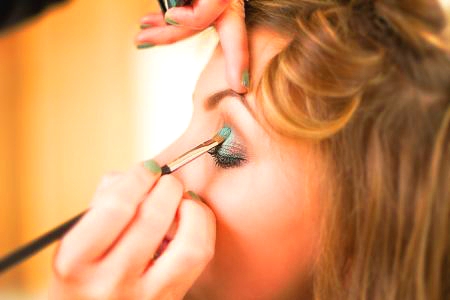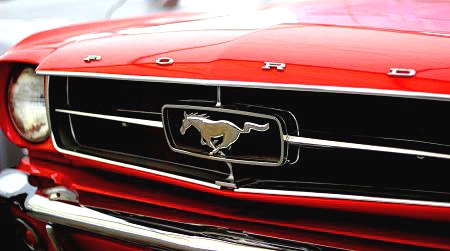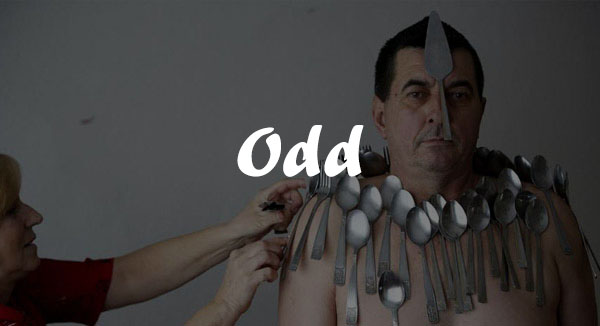Demonstrate your manhood by donning a thick layer of face powder, a thong, and high heels.
Clothes, accessories, and other everyday items are often heavily gendered, with certain things designated for men and others for women.
Right?
It’s not always the case that products are limited to a specific gender. Sometimes, an item that was meant for women becomes popular among men, and the opposite can happen too.
The phenomenon of gender-specific items being originally intended for the opposite sex is not uncommon.
The following are 8 items that were originally designated for one gender but later adopted by the other, with six going both ways.
Stockings and Leggings

Nowadays, stockings and leggings are considered to be clothing items for women, except in certain cases like sportswear or thermal clothing. However, in the past, men used to wear them too as a type of legwear.
Stockings had been the choice of legwear for fashionable, wealthy men since the ninth century. Only in the 18th century did women begin to wear them.
During a certain period, men didn’t want to be seen wearing women’s stockings, so a new term was created to differentiate them from women’s stockings. This is where the term “pantyhose” originated from.
Wristwatches

While a Rolex watch is now considered a symbol of success for men, wristwatches were initially designed for women.
Prior to World War I, wristwatches were viewed by men as delicate and effeminate, on par with jewelry. The preferred accessory for a man was a pocket watch.
The deplorable conditions in the trenches made it unfeasible for men to use pocket watches. It was only after World War I that men began to wear wristwatches.
Thongs
Men’s underwear used to include G-strings, those sexy little numbers that are now almost exclusively associated with women’s lingerie.

The first thongs that were worn in places like Egypt, Greece, and Japan were not as delicate as the ones that are worn today, but they still left the wearer’s buttocks bare.
As for women’s thongs, one story has it that they emerged in 1939. During the New York World Trade Fair, the mayor ordered nude female dancers to cover up. So, they improvised and wore G-strings instead to still be able to dance.
Crop Tops
A man wearing a crop top these days is often viewed as having feminine traits, but that wasn’t always the case. In the ’80s and early ’90s, crop tops were a symbol of masculinity.

The origins of crop tops can be traced back to the locker rooms of American football players, making them a symbol of masculinity.
However, men’s love affair with crop tops was short-lived, as by the mid-90s, they had become a women’s garment. Perhaps the men didn’t have the desire to develop a chiseled midsection to look good in them.
High Heels
High heels, despite being associated with femininity, were initially a part of the uniform of Persian soldiers, who were known for their masculinity.

The first wearers of high heels were Persian soldiers, who used them to maintain a secure footing in their stirrups while riding horses. Later, in the 17th century, French men started wearing high heels as a fashionable accessory.
It wasn’t until hemlines started to rise that women began to wear high heels, as the shoes made their feet look smaller and their legs look more toned. Meanwhile, men had given up on heels altogether by the 18th century.
Old Spice

The first Old Spice product was actually designed for women, which is ironic given their later ad campaign, “Smell Like a Man.”
In 1937, the first Old Spice product was introduced for women and was called Early American Old Spice. It was a potpourri-inspired fragrance made by the inventor, while the first men’s Old Spice scent was launched in the next year.
It seems that Old Spice’s men’s products are more popular since the brand does not seem to offer any women’s deodorants or scents anymore.
Makeup
Although women in the past did wear makeup, it was not as heavily associated with femininity as it is today. Lipstick, powder, and eyeliner were not always seen as feminine traits.
The use of cosmetics by men and women throughout history may surprise some people. Ancient Egyptian rulers wore eyeliner and lipstick to look like gods and show off their wealth, while ancient Roman men used blush and nail polish. In the 17th and 18th centuries, many men in England and France used lead-based face powder, which ultimately proved to be deadly.

Male makeup was frowned upon and eventually abandoned by most men during the 19th century due to disapproval from Queen Victoria and the Church of England. However, male makeup products are still available in stores, even though their section may be relatively small.
Ford Mustang
The Ford Mustang is a car that many young men dream of driving as it’s considered a badass and masculine muscle car.

Although the Ford Mustang is often seen as a masculine car, it was actually marketed to women when it first came out in the mid-1960s. Ford called it the “Sweetheart of the Supermarket Set” due to its large trunk that could easily accommodate groceries.
The original Mustangs were painted red to match the popular lipstick colors of the time, as Ford was marketing the car to women. Today, the Mustang remains a popular sports car among women.


